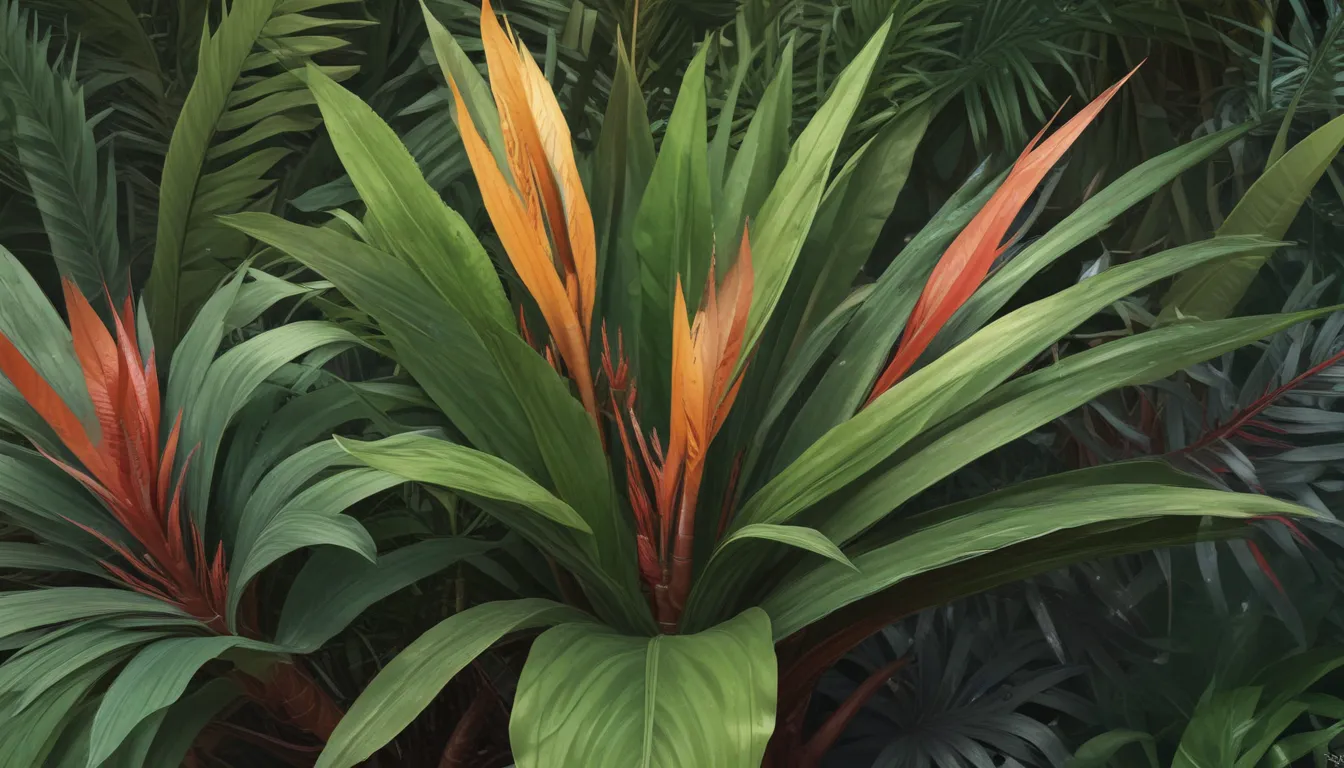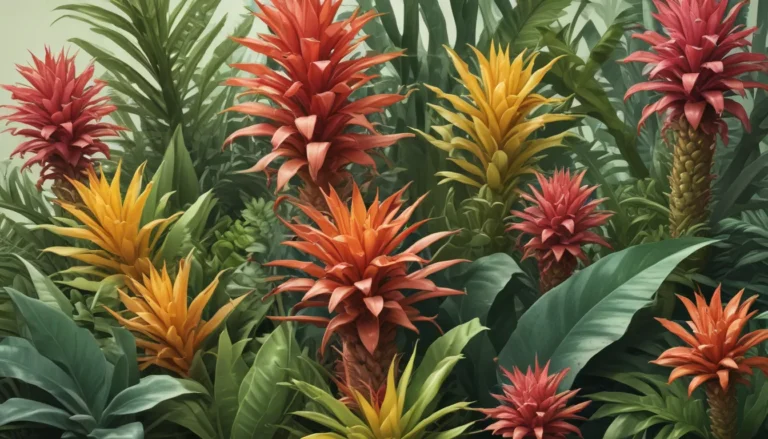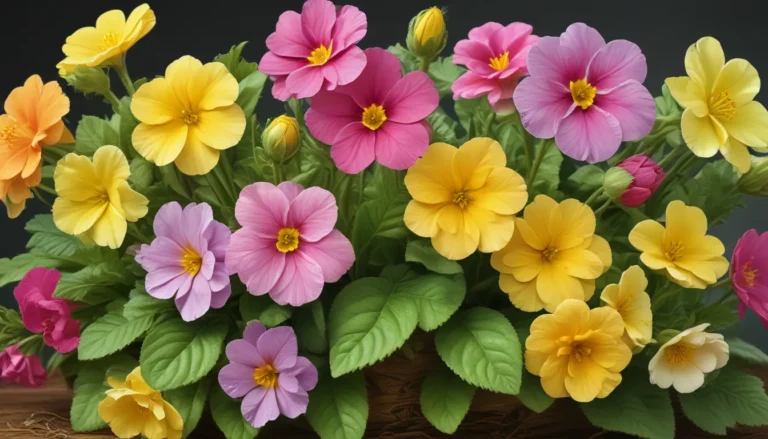The pictures we use in our articles might not show exactly what the words say. We choose these pictures to make you interested in reading more. The pictures work together with the words but don’t take their place. The words still tell you the important facts.
Cordyline, commonly known as the "Ti plant," is a captivating and versatile plant celebrated for its stunning tropical foliage and unique characteristics. Originating from Southeast Asia, Australia, and the Pacific Islands, cordylines have become a popular choice worldwide for their aesthetic appeal and adaptability to various environments. In this informative article, we will explore 18 astonishing facts about cordyline that will deepen your appreciation for this remarkable plant. From its vibrant foliage colors to its medicinal properties, cordyline continues to fascinate gardening enthusiasts and nature lovers alike. Let's embark on a journey to uncover the wonders of cordyline and understand why it has become a beloved addition to gardens and indoor spaces globally.
The Tropical Charm of Cordyline
Cordyline, also known as the Ti plant or Cabbage Palm, is a tropical plant that thrives in warm climates. Its vibrant foliage and graceful appearance make it a popular choice for adding a touch of the tropics to any garden or indoor space.
A Diverse Family of Plants
With over 20 different species, Cordyline offers a wide variety of plants, each with its own distinctive features and appearance. Popular species such as Cordyline fruticosa, Cordyline australis, and Cordyline terminalis showcase the diversity within the genus.
Vibrant Foliage Colors
One of the most striking attributes of the Cordyline plant is its colorful foliage. The leaves come in a range of hues, including shades of green, red, pink, purple, and variegated combinations, adding a tropical flair to any setting.
Easy-to-Grow Nature
Cordyline is a low-maintenance plant that is relatively easy to grow. It thrives in well-draining soil and prefers bright, indirect sunlight, making it a hassle-free option for both novice and experienced gardeners.
A Popular Choice for Landscaping
Due to its attractive foliage, Cordyline is a popular landscape plant, often used to enhance outdoor settings, gardens, and tropical-themed landscapes. Its eye-catching appearance makes it a sought-after ornamental plant.
Thriving in Dry Conditions
Cordyline is known for its ability to withstand drought and dry conditions. Its unique adaptation allows it to store water in its leaves and roots, making it well-suited for arid climates and water-scarce environments.
Medicinal Properties
In traditional medicine, the leaves and roots of Cordyline plants have been used to treat a variety of ailments, including inflammation, pain, and skin conditions. The plant's natural compounds have been valued for their healing properties for centuries.
Container Gardening Delight
With its compact size and ornamental value, Cordyline is a popular choice for container gardening. Whether grown indoors or on balconies and patios, this versatile plant adds elegance and color to any space.
A Symbol of Good Fortune
In many cultures, Cordyline plants are believed to bring good luck and fortune to the household. They are often incorporated into rituals and ceremonies for their positive associations and auspicious symbolism.
A Natural Air Purifier
Like other plants, Cordyline helps improve indoor air quality by absorbing harmful toxins and releasing oxygen. Its presence not only adds beauty to a space but also contributes to a healthier living environment.
Propagation Made Simple
If you wish to expand your collection of Cordyline plants, propagation is easily accomplished through stem cuttings. Simply take cuttings from existing plants and root them in water or moist soil to create new specimens.
Alluring Flowers
While the focus is often on its foliage, Cordyline plants also produce small, fragrant flowers. These blooms attract pollinators such as butterflies and hummingbirds, enhancing the beauty and biodiversity of your garden.
Deer-Resistant Qualities
An added benefit of Cordyline is its deer-resistant nature. Unlike many plants that are vulnerable to deer browsing, Cordyline is not a preferred food source for these animals, making it a practical choice for gardens in deer-populated areas.
Culinary Uses
In some cultures, the young shoots and leaves of Cordyline are used in culinary preparations, either raw or cooked. Their nutritional value and unique flavor add a distinctive touch to traditional dishes and recipes.
Indoor Elegance
Cordyline thrives as a houseplant, bringing a touch of tropical elegance to indoor spaces. Its ability to adapt to indoor conditions makes it a versatile and attractive choice for adding greenery to homes and offices.
Longevity and Versatility
With proper care, Cordyline plants can live for several decades, growing to heights of up to 10 feet or more. Whether used as a focal point in a garden, a potted plant on a patio, or an indoor houseplant, Cordyline offers beauty and tropical vibes wherever it is planted.
Embracing the Wonders of Cordyline
In conclusion, Cordyline stands out as a fascinating plant with a rich history and an array of benefits. Its diverse species, vibrant foliage, and medicinal properties make it a captivating choice for plant enthusiasts and health-conscious individuals alike. Whether you seek to enhance your garden or explore the potential health benefits of plants, Cordyline is a compelling option to consider. Remember to provide the proper care and conditions for optimal growth and enjoy the beauty and wonder that this extraordinary plant brings to your surroundings.
Frequently Asked Questions
Q: What are the different species of Cordyline?
A: There are several species of Cordyline, including Cordyline fruticosa, Cordyline terminalis, and Cordyline australis. Each species boasts unique traits and is native to distinct regions.
Q: Can Cordyline plants be grown indoors?
A: Yes, Cordyline plants can thrive indoors when placed in a well-lit area away from direct sunlight. They are well-suited for pots and serve as attractive additions to indoor gardens and living spaces.
Q: How often should I water my Cordyline plant?
A: Cordyline plants prefer slightly moist soil, so it's essential to water them regularly. Avoid overwatering, as it can lead to root rot. Check the top inch of soil and water when it feels dry to the touch.
Q: Do Cordyline plants require special care?
A: While Cordyline plants are generally low-maintenance, they thrive in well-draining soil and moderate temperatures. Provide partial shade to full sun exposure and occasional fertilization for optimal growth.
Q: Are Cordyline plants toxic to pets?
A: Certain species of Cordyline, such as Cordyline fruticosa, can be mildly toxic to pets if ingested. Keep them out of reach of animals to prevent any potential health issues.
Dive into the captivating world of Cordyline and uncover the astonishing facts that make this tropical plant a delightful addition to any environment. Whether adorning your garden, balcony, or indoor space, Cordyline's beauty and benefits are sure to inspire and enchant. Explore the possibilities of cultivating this remarkable plant and experience the joy and wonder it brings to your surroundings.






